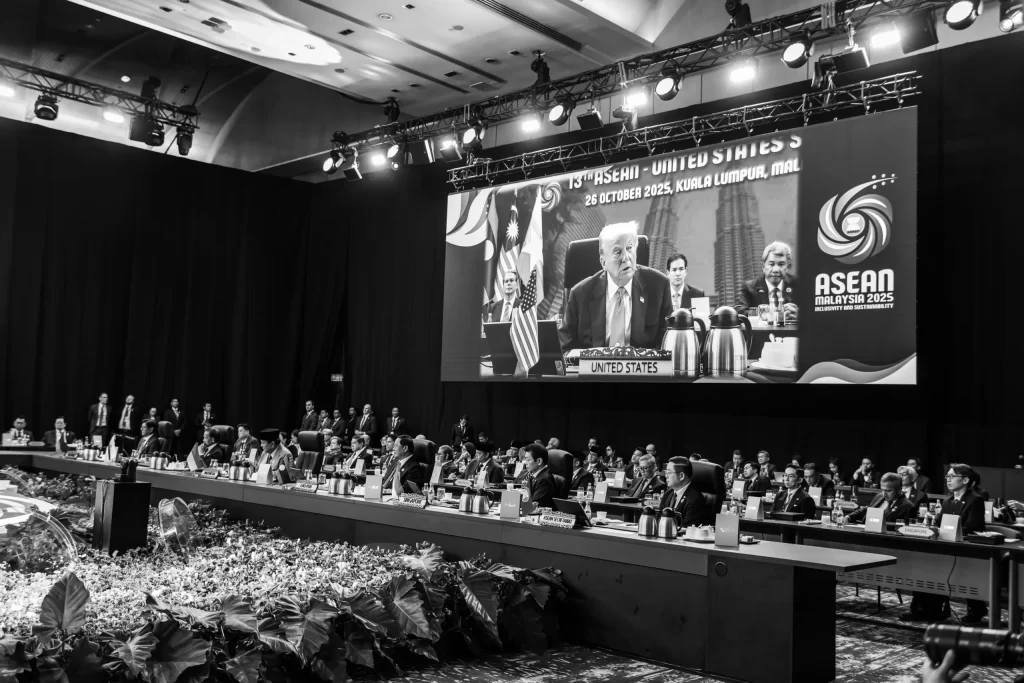Recent U.S. expansion of critical minerals cooperation in ASEAN and the broader Indo-Pacific is a strategic opportunity, not without challenges, write Regan Kwan, Courtney Weatherby, and Brian Eyler of Stimson Center
The United States appears to be forming a strategic bloc of critical minerals partners. China is by far the world’s top producer of critical minerals, yet with effort and investment, this US-led bloc could possibly break China’s near-monopoly grip on the minerals that will drive our technological future.
Can the U.S. present a responsible alternative? Are ASEAN and the broader Indo-Pacific the right fit for this kind of new strategic engagement?
Last weekend, the U.S. government signed agreements for collaboration on critical minerals with Thailand, Malaysia, and Cambodia while President Trump was in Kuala Lumpur for the ASEAN Summit. These commitments, as well as recent similar agreements with key defense allies Japan and Australia, double down on Trump’s prioritisation of ensuring a diverse and resilient critical mineral supply chain for the United States, a priority that builds on a bipartisan consensus that critical minerals are key to future technologies and America’s economic security.
Emerging economies in Asia share this consensus, and many have adopted national strategies prioritizing this industry. Further, the ASEAN Secretariat recently published a declaration on becoming a hub for sustainable and collaborative mineral development. Building strategic partnerships that can challenge and possibly decouple China’s near-monopoly on critical minerals supply chains will require long-term investments and commitments. First steps could focus on responsible and transparent practices that adopt higher standards that minimize the sector’s local health and environmental impacts.
China is the dominant processing country for 19 of the 20 critical minerals analysed by the International Energy Agency. Even the next 10 largest global producers combined cannot match China’s output as of 2024. When it comes to rare earths, the most valuable subgroup of critical minerals, among the slate of America’s new partners, Australia and Thailand are tied for fourth-largest producers, and Malaysia ranks tenth.
For the U.S., which ranks second globally in rare earths production, diversifying the rare earths supply chain through partnering with countries with both high production and potential reserves makes strategic sense.
However, expanding the extraction and production of critical minerals is a historically messy and dirty process, especially for rare earth. China’s dominance was built on the back of promoting under-regulated mining that led to substantial negative externalities.
Beginning in the 1990s, the southeastern Chinese province of Jiangxi saw an explosion of illegal small-scale rare earth mines, most of which lacked proper treatment facilities and discharged wastewater back into nearby river systems. This behavior caused widespread acidification of the local groundwater through chemical infiltration and introduced additional processing chemicals into rivers through rain or runoff, which will take billions of dollars to clean up.
Beginning in 2004, faced with mounting environmental concerns, China gradually started to regulate and centralise the industry through crackdowns on illegal mines, stricter environmental laws, and the gradual consolidation of the rare earth industry to six state-owned enterprises.
Over time, China achieved its goal of total domestic industry regulation, but over the last decade, “unregulated” Chinese rare earth mining activity moved into neighbouring Myanmar and Laos, where now more than 500 rare earth mines are ruining livelihoods and rivers throughout mainland Southeast Asia.
The impacts and risks go beyond local communities, as the Mekong Region supplies rice, fish, and other agricultural products to the global market.
As the U.S. and its partners in ASEAN seek to expand critical minerals production, it is vital to ensure that these efforts minimize health and environmental impacts. ASEAN’s declaration lays a foundation for future regional collaboration to collectively strengthen the sustainable production and trade of rare earth elements, share best practices and knowledge, and support joint research opportunities.
The U.S. has an opportunity to engage strategically while also differentiating its approach from China’s by pushing for common, responsible standards among partners. Higher standards in extraction production processes can focus on reducing labour, health, and environmental risks.
Engaging with local communities and impacted stakeholders to mitigate impacts and improve oversight is also a low-hanging fruit toward building a more sustainable approach. Greater focus and investment should be given to researching and piloting emerging, less harmful extraction methods, like bioleaching, and alternative sourcing from e-waste recovery and recycling.
While policies and decisions will ultimately be driven by the actions of participating governments and private sector actors, importantly, the U.S. should build a framework for critical minerals supply chain expansion that adheres to the words written in its agreements, such as in its MOU to Thailand, which pledges “to support the transition to open, efficient, secure, and transparent critical minerals and rare earths markets.”
The article was first published on the Stimson Center’s website.
Brian Eyler is Director of the Southeast Asia Program and the Energy, Water, and Sustainability Program.
Regan Kwan is a Research Analyst with the two Programs.
Courtney Weatherby is Deputy Director of the Southeast Asia program.

